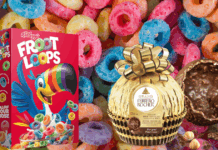If you haven’t come across any of the hullabaloo surrounding packaged milk and tea-whiteners in the Pakistani media recently, you’ve probably been living on an idyllic island far away from dull reality. Lucky you.
To put in a nutshell, all packaged milk and tea-whitener brands were falsely characterized as harmful and consumers were told to stop buying them. After a long process of proving these allegations wrong, some tea-whitener brands have been labeled completely safe by the Supreme Court of Pakistan.
Here’s the thing. Misreporting is rampant. Fake news is dominant. Lines between fact and fiction are blurred every day by media hatchet jobs. Considering the above, I followed up on an issue millions of Pakistanis are affected by, daily: Tea, and the whiteners used to enhance its taste. How was Pakistan’s favourite drink being consumed? Were tea whiteners really full of preservatives/chemicals and poisoning millions of tea drinkers? Was tea really unfit for consumption because of these whiteners? Were consumers being misinformed, or was the truth elsewhere? Watch this documentary, and find out what really happened.Watch the full documentary here: https://youtu.be/bBI6CywxxI4
Posted by Wajahat S. Khan on Monday, May 7, 2018
For those who are still confused about what the whole drama was about, here are seven things you should know about tea-whiteners:
1. Tea-whiteners are known by many other names; tea creamers, coffee creamers, dairy whiteners and non-dairy creamers to name a few.
2. Tea-whiteners are used in hundreds of countries around the world in regions including North America, Latin America, Europe, Asia-Pacific, Middle East, Africa and Asia.
3. The powdered creamer was first marketed in 1952 made from dehydrated cream and sugar. The original creamer did not mix well in liquid because of the protein in milk. Some years later, a new version was created that could easily be dissolved in hot liquid because it replaced most of the milk fat with vegetable oil, and reduced the milk protein.
4. Tea-whiteners are not milk. Milk contains various nutrients necessary for a healthy lifestyle and packaged milk provides a clean, hygienic and hassle-free way of nourishing our bodies. Tea whiteners should not be exchanged for the wholesome nutrition obtained from milk.
5. A tea-whitener is used in place of fresh milk to adjust the color and flavor of black tea, coffee or other beverages like hot chocolate or fruit smoothies.
6. Tea-whiteners, available in powdered and liquid forms, are convenient because they have longer shelf lives. Their ready-to-use nature makes them an easy choice when proper storage and refrigeration for milk is not possible.
7. A tea whitener generally contains vegetable-based fats, milk protein (derived from casein), fat content, sugar, and water (in case of a liquid whitener). The vegetable fat in tea creamers is commonly obtained from palm oil which is derived from plants that are not genetically modified and is safe for human ingestion.

So there you have it. No icky ingredients, no shady preservatives and no ulterior motives other than adding flavor, color, aroma, and consistency to your beverage. One advice though: choose a reputable brand and you’re golden.







































